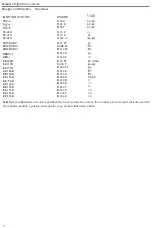
Group
28
Igni
t
ion
sys
t
ems
Introduction
Introduction
Comprehensive development work by
Volvo
has
resulted
in
the
design of
engines
boast
ing
high performan
ce,
low
fuel
consumption, cleaner
exhaust gases, a high standard of
reliability
and
simplifie
d
service procedures. The ever-
increasing use
of
microelectronics for the control and regulation of
igni
ti
on
and
fuel
systems has been one of
the
most
sign
if
ican
t factors
in
this
development.
Compared
with their
mechanical
counte
rpart
s,
elec
t
ronic
(or microprocessor-controlled) ignition systems offer
vantages such as greater
r
eliability,
optimum
timing
under
all driv
ing co
nditions
and
few moving parts, reducing
service
requirements
t
o
a minimum
.
A
s
a result,
Vo
l
vo has,
in
recent years,
co
mp
l
e
t
ely
replaced i
t
s
r
elatively
simple,
mechanically
-controlled,
contact-breaker
sys
tems with
sophisticated
s
ystems
controlled
by microprocessors
and
electronics
.
Equ
ipping
system
control
units with various additional program functions, and integrating
them with
other control
systems and
componen
ts
,
has enabled traditional ignition systems 10
be
augmented
by
features such
as temper-
ature-eompensated timing for faster
engine
warm-up
,
improved exhaust
gas composition and
lower working tem-
perature
.
Other functions which may be
con
troll
ed
by an electronic
i
gnition
sys
tem
control unit include
fuel
cut-off
under engine braking
(deceleration) conditions
and
igni
tion
retardation
in individual
cylinders
to
eliminate
knock
.
Volvo markets a wide range of
models
with a
series of
engine
options.
This
,
combined
with rapid developments
in
the field of electronics
,
means that a wide
variety of
electronic
ignition systems
of different types and degrees of
re-
finement
now
exist
.
Systems of
thi
s
type
impose completely
new demands on fault-tracing procedures
.
A
certain
basic understanding of
the
input and
ou
tput
signals,
the manner
in
which the
componen
t
s
are
connected
and
the fun
c
tion/purpose
of
each
is essential
to
an understanding of
the
types
of
fault which may arise
,
and
to ensuring
that the
co
rrect diagnosis
is
made
in each case
.
Sensors and pick-ups providing
fa
st
and precise
info
rmation
on
the prevailing running conditions are vital
to ensure
that the
electronics
con
trol t
he
working
componen
ts
of
the
system
rel
iably
and accurately.
This
manual deals with
the
electronic
igni
t
ion sys
tems
used by Volvo on
i
t
s
700
series models, in
terms
of
design
and function
,
as well as fault tracing,
repa
i
r
and maintenance. The
fir
s
t
part of
the
manual consists of
a
description
of
the features,
components
and
compensation
functions
common
to the
various systems,
followed
by
a description of
each individual
system and some of
the
special
functions peculiar to
each.
The appropriate wi
ri
ng d
i
agrams a
r
e
i
n-
cluded.
3






































